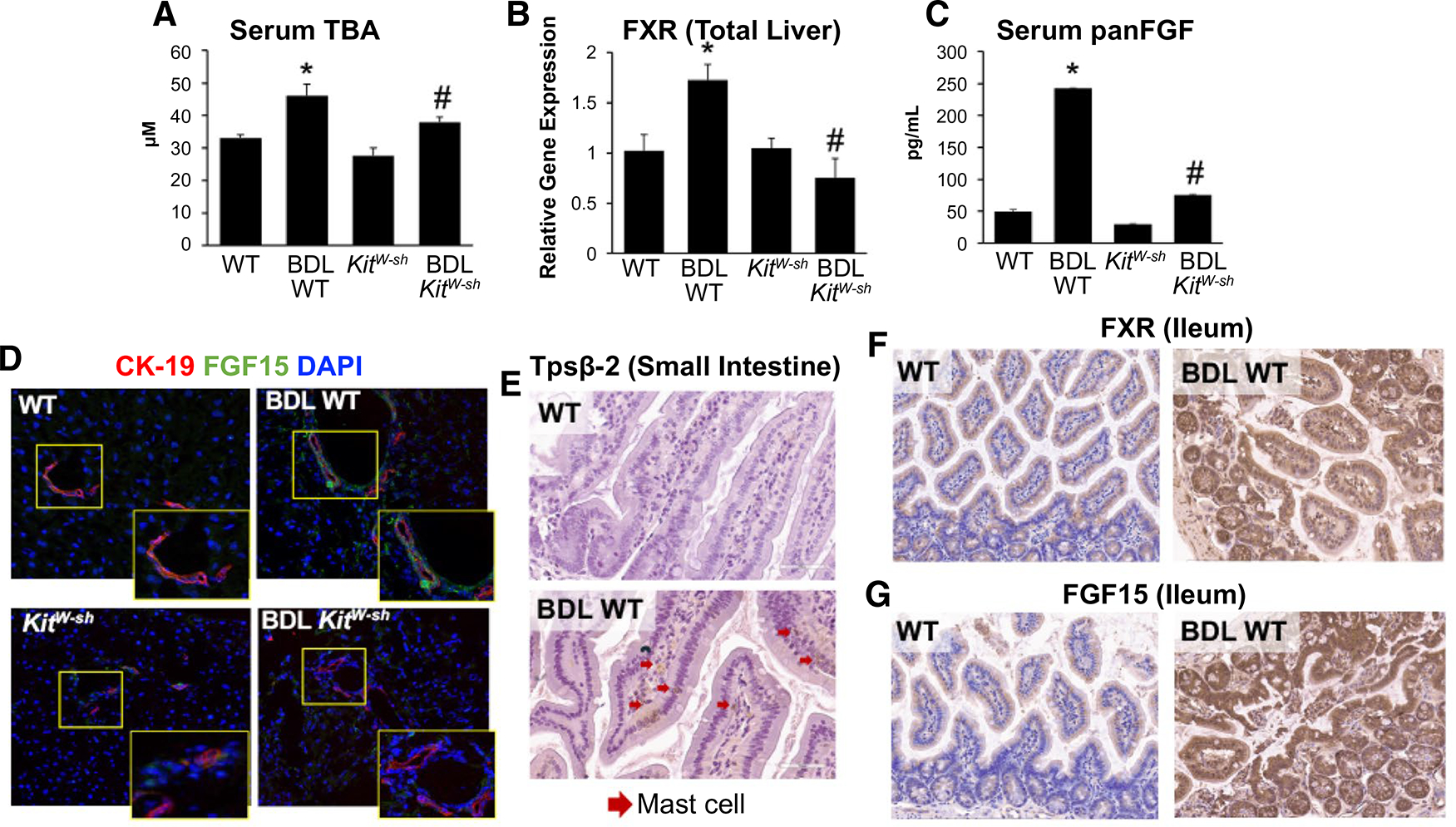FIG. 2.

(A) MCs alter TBA and FXR/FGF signaling in an established model of cholestatic MC-deficient mice. Serum TBA content is increased in BDL WT compared with WT mice, but in BDL KitW-sh mice, TBA content is reduced. Serum TBA was unchanged between control groups. Hepatic FXR is unchanged in WT and KitW-sh mice; however, expression is elevated in BDL WT mice compared with WT and KitW-sh. (B) BDL KitW-sh mice exhibited reduced hepatic FXR expression compared with BDL WT mice. (C) BDL WT mice have elevated serum panFGF secretion compared with WT and KitW-sh, which is reduced in BDL KitW-sh mice; no significant changes were found between control groups. (D) Biliary FGF15 (green) expression was elevated in BDL WT mice shown by immunofluorescence, costained with CK-19 to mark bile ducts (red) but reduced in BDL KitW-sh mice with no changes between control groups. (E) In BDL WT small intestine, there is increased MC presence detected by tryptase β−2 (Tpsβ−2) immunoreactivity and marked by red arrows. In distal ileum from BDL WT there was increased (F) FXR and (G) FGF15 immunoreactivity compared with WT mice. Data are mean ± SEM of n = 4 experiments for qPCR, panFGF EIA, and TBA from 4–6 mice per group. *P < 0.05 vs. WT; #P < 0.05 vs. BDL WT. Representative images are presented as ×20 for FXR and ×40 for FGF15 and Tpsβ−2.
